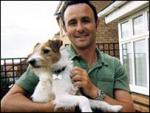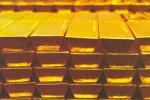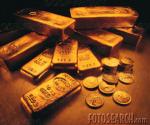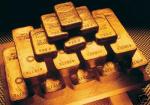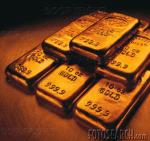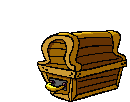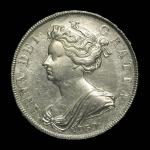-
Posts
3,491 -
Joined
-
Last visited
-
Days Won
25
Content Type
Profiles
Forums
Blogs
Gallery
Events
Store
Everything posted by bigjarofwasps
-

Op Telic Casualties & Fatalities
bigjarofwasps replied to bigjarofwasps's topic in Modern Campaigns and Conflicts
Sergeant Wayne Rees, from the 19 Light Brigade, the Queen's Royal Lancers, was killed in a road crash while on patrol in the Maysan province of southern Iraq. The 36-year-old, from Nottingham, was a loving family man with a mischievous wit, colleagues said. His squadron leader, Major Martin Todd, said the regiment had lost not only a charismatic and wholly professional soldier but also one of its most ebullient and best loved characters. He was engaged and had an 11-year-old daughter and seven-year-old son. -

War on terror spy coins...
bigjarofwasps replied to Chris Boonzaier's topic in Coins & Commemorative Medallions
-

Brinks Mat Gold Robbery
bigjarofwasps replied to bigjarofwasps's topic in Coins & Commemorative Medallions
-

Op Telic Casualties & Fatalities
bigjarofwasps replied to bigjarofwasps's topic in Modern Campaigns and Conflicts
The total number of UK troops killed in operations in Iraq has risen to 128 after a soldier from the Queen's Royal Lancers died in a road traffic accident in Maysan province. -
I am currently reading a book called `The Salvage of the Century` by Ric Wharton, it covers mainly the gold bullion recovered from HMS Edinburgh, sunk during WW2. However, he also talks about HMS Hampshire, her final voyage to Russia and the theory that Kitchener was accompanying one million gold sovereigns, valued today at ?60,000,000. This is the first time I have heard this claim. He does go into various additional theorys, i.e, about the files being withheld after 50 years, no one being allowed to dive on her, as she`s a war grave, but that no one died on her when she sank save Kitchener. This I feel is untrue, but can anyone confirm or deny this & has anyone heard the sovereigns claim?
-
The Great Gold Robbery 1855 http://www.btp.police.uk/History%20Society...d%20Robbery.htm Flying Squad foils ?80m robbery http://news.bbc.co.uk/1/hi/uk/3723839.stm Brinks Mat http://www.bbc.co.uk/crime/caseclosed/brinksmat.shtml
-

Brinks Mat Gold Robbery
bigjarofwasps replied to bigjarofwasps's topic in Coins & Commemorative Medallions
-

Brinks Mat Gold Robbery
bigjarofwasps replied to bigjarofwasps's topic in Coins & Commemorative Medallions
Brinks Mat Gold 'is abroad 'Monday 5th Mar 2001. MISSING gold from the Brinks Mat bullion robbery is in the Philippines, says a member of the gang who stole it. In an exclusive interview with the Sunday Independent from his West Country home, one of the men behind Britain's biggest heist has sensationally claimed that the ?28million haul was stolen booty belonging to Philippines President Ferdinand Marcos and his wife Imelda. And almost all three tonnes of it went back to the Philippines after the robbery, says the source, a close friend of gangland killer Kenneth Noye, who helped mastermind the raid. The Indy has agreed to not to publish the gang member's identity but has passed full details of his extraordinary revelations to detectives at New Scotland Yard investigating the 1983 robbery. Speaking from his sprawling home, surrounded by security cameras and guarded by two dogs, named Brinks and Mat, the leading underworld figure, said: `Ferdinand and Imelda Marcos had stolen the bullion from their own people and were looking for a safe home for the loot in Britain. `The Brinks Mat gang was simply hired to retrieve the gold from the Marcos family. All of it was returned to the Philippines for which gang members received substantial payment. `None of the gold remained in this country, that is why the police will never find any of it here. Everything went back, the gold that has been found was not from Brinks Mat, and the police know that. `They could carry out tests on the gold to prove that. `Everyone thinks that the gang was looking for travellers' cheques and stumbled on the gold. `But if that was true then why did they have three lorries waiting to take it away? You don't need lorries to steal a few travellers' cheques.' The Brinks Mat insider refused to reveal who had hired the gang or how the bullion was returned to the Philippines but claimed insurance money had been paid to the Marcos family after the robbery and police documents relating to the case referred to Imelda Marcos. During the now infamous raid at Heathrow airport, the gang doused security guards with petrol and threatened to ignite it unless they co-operated. Convicted road rage killer Kenneth Noye, 53, whose wife Brenda now lives in Looe, was jailed for 14 years for handling the bullion. This month detectives searching for the loot searched two yards behind a scrap metal merchants in Hastings, Sussex. And it is likely that more raids will follow, a police spokesman said. The late President Ferdinand's glamorous wife Imelda was born into poverty but amassed a huge wealth of her own. After her husband's death in 1989 she stood trial in New York to answer charges of concealing ownership of US property and other goods, bought with stolen Philippine government funds. She was acquitted, with her lawyer claiming the responsibility had lain solely with her husband. -

Brinks Mat Gold Robbery
bigjarofwasps replied to bigjarofwasps's topic in Coins & Commemorative Medallions
http://www.amazon.co.uk/Death-Warrant-Kenn...y/dp/0752876201 http://news.bbc.co.uk/1/hi/uk/714289.stm http://bbs.keyhole.com/ubb/showthreaded.php/Number/340645 -
The Brinks Mat Robbery occurred on 26 November 1983 when six robbers broke into the Brinks Mat warehouse at Heathrow Airport, England. The robbers thought they were going to steal ?3 million in cash; however when they arrived they found ten tonnes of gold bullion (worth ?26 million). The gang got into the warehouse thanks to security guard Anthony Black, the brother-in-law of Brian Robinson who conceived the raid. Scotland Yard quickly discovered the family connection and Black confessed to aiding and abetting the raiders, providing them with a key to the main door and giving them details of security measures. Tried at the Old Bailey, Robinson and gang leader Michael McAvoy were each sentenced to 25 years imprisonment for armed robbery. Black got six years, and served three. Prior to his conviction McAvoy had entrusted part of his share to an associate John Perry. Perry recruited Kenneth Noye (who had links with a legitimate gold dealer in Bristol) to dispose of the gold. Noye melted down the bullion and recast it for sale. However the sudden movements of large amounts of money through a Bristol bank came to the notice of the Treasury who informed the police. Noye was placed under police surveillance and in January 1985 killed an officer he discovered in his garden. At the resulting trial the jury found him not guilty on the grounds of self-defence. In 1986 Noye was found guilty of conspiracy to handle the Brinks Mat gold, fined ?700,000 and sentenced to 14 years in prison, although he only had to serve 8 years before being released in 1994. However, in 1996 Noye murdered motorist Stephen Cameron during a so-called "road rage" incident and fled the country. The police tracked Noye to Spain and in 2000 he was arrested, deported back to Britain, tried and convicted. He received a life sentence. Missing gold Although the gold that Noye had hidden was eventually recovered, the Brinks Mat story is still far from over. Three tonnes of gold is still missing from the original robbery and this is one element of the case that remains open. Three tonnes of stolen gold has never been recovered. It is claimed that anyone wearing gold jewellery bought in the UK after 1983, is probably wearing Brinks Mat
-

Ancient Counterfeit of Claudius
bigjarofwasps replied to Bear's topic in Coins & Commemorative Medallions
Hi Bear, this is really interesting. I know next to nothing about ancient coins, so am very curious as to how they know that there counterfeit? Can you shine any light on this? -
No worries Warlord, your thread is most welcome, please feel free to add more info or post new threads, that you think might be of interest. I believe that the Falklands have their own gold coins to? Gordon.
-

Captured Spanish Treasure
bigjarofwasps replied to bigjarofwasps's topic in Coins & Commemorative Medallions
Many thanks Warlord, thats really interesting !!!!!!!! I have seen pictures of the coins, with goldsmiths markings you mentioned, again very interesting. Thanks for sharing this with us. -

Op Telic Casualties & Fatalities
bigjarofwasps replied to bigjarofwasps's topic in Modern Campaigns and Conflicts
Friday, 29 December 2006 A British soldier has been killed by a roadside bomb in Basra, southern Iraq, according to the Ministry of Defence. The soldier, from the 2nd Battalion, The Duke of Lancaster's Regiment, was killed while taking part in a routine patrol in Basra City. The Warrior Armoured Fighting Vehicle which he was travelling in was targeted by a roadside bomb. He was airlifted to the Field Hospital at Shaibah Logistics Base, but died later as a result of his injuries. There were no other casualties. According to the MoD his family, who have been informed of their relative's death, have asked for a period of grace before further details are released. The total number of UK troops killed in operations in Iraq now stands at 127. Sergeant Graham Hesketh, from the 2nd Battalion, The Duke of Lancaster's Regiment, was killed by a roadside bomb while taking part in a routine patrol in Basra City in southern Iraq. The Warrior Armoured Fighting Vehicle which he was travelling in was targeted by a roadside bomb. The 35-year-old, born in Liverpool and who grew up in Runcorn, Cheshire, had a fiancee who is a soldier also serving in Iraq. He had a seven-year-old daughter and a three-year-old son. http://www.mailonsunday.co.uk/pages/live/a...d=1770&ct=5 -

Captured Spanish Treasure
bigjarofwasps replied to bigjarofwasps's topic in Coins & Commemorative Medallions
Good question Dan, I`ve seen Lima half crowns for between ?15 & ?40. Couldn`t say for full crowns, as I`ve never seen any for sale. The Vigo type again, I`ve only ever seen a half crown and that was for nearly ?300 if I recall correctly! Hope this helps. Gordon. -

1944 Liberation of Transylvania gold medal
bigjarofwasps replied to Carol I's topic in Coins & Commemorative Medallions
Many thanks for sharing this one with us Carol!!!!!!!!!! -
http://www.mod.uk/DefenceInternet/DefenceN...ecember2006.htm
-
"Moscow gold", ''el oro de Mosc?" in Spanish, was a term applied to Spanish gold reserves transferred to the Soviet Union and to Soviet-controlled banks by the Spanish Republican government in 1937 to purchase arms and military equipment during the Spanish Civil War. At the time, Spain had held the world's fourth largest gold reserves, worth more than US$750 million. More than US$500 million worth of these reserves were transferred to the Soviet Union, the only nation to supply significant quantities of arms and equipment to the Spanish Republic during the war. The director of the Bank of Spain stated his opposition in the secret meeting that approved it. When the Nationalists learned of this, Francoist press stated that this gold was a property of all the Spanish people, not the Spanish government. Spanish historians have contended in years since that much of the Soviet hardware sold to the Republic was of marginal quality and was sold at deliberately inflated prices and that the Republican government of Juan Negr?n L?pez failed to respond to and may have been complicit in this malfeasance, contributing to the Republican defeat in the Civil War. The issue of "Moscow gold" was raised as a critique of the reemergence of the PSOE party during the Spanish transition to democracy.
-
-

Captured Spanish Treasure
bigjarofwasps replied to bigjarofwasps's topic in Coins & Commemorative Medallions
-
The British minted silver crowns from captured Spanish silver, as they had done after the battle of Vigo Bay, the English triumphantly celebrated their capture of the Spanish treasure ships in the War of Austrian Succession by turning some of the booty into their own currency. The British melted down the captured Spanish pesos, which the were from the mint in Lima, and reminted them into English coins, marked Lima to commemorate the victory. (George II - 1728 to 1758 - Some coins of 1745 and 1746 have LIMA below the bust to indicate that they were made from silver captured by Admiral George Anson in June 1743.)
-
-

Spanish Gold Escudos
bigjarofwasps replied to bigjarofwasps's topic in Coins & Commemorative Medallions
Spanish and Spanish colonial gold coins were minted in denominations of 8, 4, 2, 1, and 1/2 escudos, the 1/2 escudos existing only in the later milled bust type coinage. Gold escudos coins were valued at 16 times that of the silver reales issues, thus one 8 escudos gold coin would be equivalent to sixteen 8 reales silver coins. Due to their high valuation, gold coins were seldom used except by the rich, and therefore were not exposed to heavy wear from frequent transactions. For this reason, and because gold does not corrode like silver, most gold escudos coins are superior in quality compared to the silver reales issues. -
Spanish Colonial Mints Listed by order in which they opened. Mexico (1536-1821) Mintmark-M or M with small o above. The mint produced the following coin types: Pillar type cob - (1536-1572), shield type cob - (1572-1733), milled pillar - (1732-1771), and milled bust - (1771-1821). Also produced an irregular shaped machine struck shield type coin (1733-1734) Mexico never produced the pillars and waves coin design. The first dated coin was struck in 1607. Santo Domingo (1542-1564) (1573-1578) Mintmark-SP or monogram s overlapping the left side of a large D with a small o above. The mint produced the following coins types: Pillar type cob - (1542-1564) rare, shield type cob - (1573-1578) very rare. Since the mint closed in 1578, none of the later coin types or dated coins were ever produced. Lima (1568-1572) (1577-1588) (1659-1660) (1684-1824) Mintmark-P, or P with star above, or L, or LM, or LIMA, or a slightly overlapped ME. Lima has the distinction of being the only mint to strike all five of the coin types. Pillar type cob - (1568-1571), shield type cob - (1572 and 1577-1588), pillars and waves type cob - (1659-1660 and 1684-1752), milled pillar - (1752-1772), and milled bust - (1772-1824). The first dated coin was struck in 1659. La Plata (1573-1574) Mintmark-P. The mint was in operation for a few short months and produced only shield type cobs, which are indistinguishable from those of early Potosi No dated coins were produced. Potosi (1574-1825) Mintmark-P or later a monogram PTSI which looks similar to a dollar sign ($). The mint opened after the pillar type cob period, thus it is the only coin type not to see production. Shield type cob - (1574-1652), pillars and waves type cob - (1652-1773), milled pillar - (1767-1770), and milled bust - (1773-1825). The first dated coin was struck in 1617. Panama (1580-1582) Mintmark-AP arranged vertically. The mint was in operation for only a couple of years and produced a limited number of undated shield type cobs - all very rare. Cartagena (1622-1655) Mintmark-S, or RN arranged vertically, or NR arranged vertically, or C. The mint produced the following coin types: Shield type cob - (1622-1635) rare and pillars and waves cob - (1653-1655) also rare. The first dated coin was struck at the mint opening in 1622. The Cartegena mint is known more for its gold escudos coin production. Bogot? (1622-1820) Mintmark-S, or NR both vertically or horizontally, or NR with a small o above each arranged both vertically or horizontally, or NR alone or with a single small o above, or N, or SF or FS both vertically or horizontally, or F. The mint produced the following coins types: Shield type cob - (1622-1651) rare, pillars and waves cob - (1651-1748) rare, milled pillar - (1759-1762) very rare, and milled bust - (1772-1820) also rare. The first dated coin was struck at the mint opening in 1622. The Bogot? mint is known more for its gold escudos coin production. Cuzco (1698) (1824) Mintmark-C or CUZ. The mint produced only one type of silver coinage, that being the dated milled bust type in 1824 which incorporated the mintmark CUZ. Only gold 1 and 2 escudos were minted in 1698 using the pillars and waves design and the mintmark C. Guatemala (1733-1821) Mintmark-G or NG. The mint opened in 1733 when the first machine struck coins were being introduced to the colonies. The mint produced a hand cut pillar type coin (1733-1753) very similar to the later milled pillar coin but irregular in shape like a conventional cob. Minted next was the milled pillar - (1754-1771) followed by the milled bust - (1773-1817). Santiago (1749-1817) Mintmark-S with a small o above. The mint produced two types of coins, a very rare milled pillar - (1751-1770) and a more common milled bust - (1771-1821). The Santiago mint is known more for its gold escudos coin production. Popayan (1758-1822) Mintmark-P. The mint produced only one type of silver coinage, the rare milled bust - (1810-1822). The Popayan mint is known more for its gold escudos coin production.



